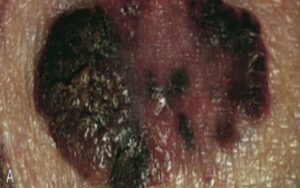How Much Sunlight Do We Need?
We can say that vitamin D is the sunshine vitamin. Cholesterol synthesized in the liver, here is 7-dehidrokolesterol became blood circulation under the skin layer. During exposure to sunlight, ultraviolet B (UVB) rays that enters the skin, and 7-previtamin D3 fotolize dehidrokolesterol the will. Previtamin D3, vitamin D3 is the body temperature by izomerize.
The factors that influence the production of vitamin D;
- ciltdek the amount of the pigment,
- use sunscreen,
- aging
- sunshine hours
- seasons
- the current geographic location.
The melanin pigment which gives color to the skin, by absorbing UVB radiation markedly reduces cutaneous photosynthesis of vitamin D3. 5-6 with skin type (always bronzed, never fireproof) and the amount of melanin in their skin pigment Africans and African Americans, previtamin D3 in the skin that UVB radiation from sunlight is so effective in removing the capacity to produce type 2, white skin (always lit, sometimes tanned from 95 per cent to 99% reduces.
A sunscreen with sun protection factor 15 application UVB radiation of about 99% absorb. This condition previtamin D3 in the skin of production capacity reduces by 99%.
The angle of the sun's rays reaching the Earth, has a significant impact on the production of previtamin D3. Inclined at an angle of incoming photons UVB, ozone is forced to travel along a longer distance, and it loses its effect. During the winter months, early morning and late in the afternoon, the sun's Rays are more oblique. As a result, most if not all of UVB photons are absorbed by the ozone layer.
Aging in human skin 7-dehidrokolesterol have a significant effect on the amount of. A 70-year-old person, the capacity to produce vitamin D3 for young adults, approximately 25% of the owner. Properly exploited, the elderly who are in sunlight, it can raise blood levels of.
Things To Know About Vitamin D Deficiency:
Today it is much more than thought of vitamin D deficiency. Today, the world population of > 50% is considered to be a lack of vitamin D in. A healthy diet is the first reason for this lack adequate amounts of vitamin D stems from the illusion that it contains. However, few food vitamin D, contains. The second important reason is the role of sunlight in the production of vitamin D that is missing.
The basic and general health benefits of vitamin D in the blood in order to have vitamin D levels less than 30 ng/ml should be. To reach this level, Lu d, 800 to 1000 per day with diet or sunlight necessary. Foods with vitamin D daily even need 10% to 40% is able to meet. Considering all these reasons, vitamin D deficiency worldwide, it is no surprise that is one of the most common medical problems.
Vitamin D deficiency can cause growth retardation and rickets in children. By speeding up the diagnosis of osteopenia and osteoporosis in adults leads to the risk of fracture. Vitamin D deficiency to cancer, autoimmune diseases, infectious diseases and is associated with an increased risk of cardiovascular disease.
Sunlight and Cancer
So the sunlight to produce vitamin D, which is necessary, at the same time, non-melanoma skin cancer is to increase the risks of a highly paradoxical situation. Melanoma is the most deadly type of skin cancer and sunlight, the relationship of which is more controversial. Type melanoma occur in many areas which are not exposed to sunlight. Due to the professions it is found that the risk is reduced in individuals exposed to the sun.
I live near the equator and in the serum of people who have white skin exposed to sunlight on a daily basis vitamin D values of 40-60 ng/mL. Skins is designed to produce a sufficient amount of vitamin D and melanin pigmentation, non-minimizes the risk of melanoma skin cancer.
How long should a person be exposed to sunlight for vitamin D to meet the requirement?
The answer to this question, time of day, season of the year, geographical location, weather conditions, and depends on skin pigmentation. For example, type 2 skin with a light-skinned persons in the month of June, at 42 degrees north latitude, arms and legs, including two to three times per week at 10:00 and 15:00 between 5-15 minutes before the sun, vitamin D is sufficient to meet requirements.
It is logical for it to be your face protected from the sun. Typically, the damaged region is a region most exposed to the sun and face from the sun. The surface area due to vitamin D3 provides a minimum amount compared to the rest of the body. 5-15 minutes after exposure to the sun, other people, if you stay outside for a long time, to prevent sunburn and the harmful effects of excessive exposure to sunlight it is recommended to apply a sunscreen with an SPF of at least 15.
As a result, you should take advantage of sunlight in a conscious way. The beneficial effect of the sun in the light of science should be re-evaluated.





